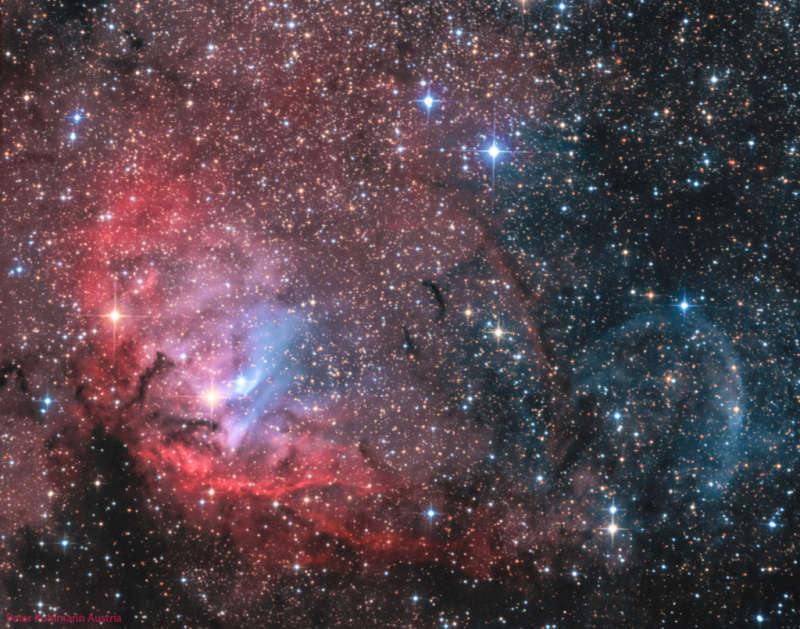Credit & Copyright: Peter Kohlmann
Explanation:
Framing a bright emission region,
this telescopic view
looks out along
the plane of our Milky Way Galaxy toward the nebula rich constellation
Cygnus the Swan.
Popularly called the Tulip Nebula,
the reddish glowing cloud of interstellar gas and dust
is also found in the
1959
catalog
by astronomer Stewart Sharpless
as Sh2-101.
Nearly 70 light-years across, the complex and beautiful Tulip Nebula
blossoms about 8,000 light-years away.
Ultraviolet radiation from young energetic stars at the edge of the Cygnus
OB3 association,
including
O star HDE 227018,
ionizes the atoms
and powers the emission from the Tulip Nebula.
Also in the field of view is microquasar
Cygnus X-1,
one of the strongest X-ray sources in planet Earth's sky.
Blasted by powerful jets from a
lurking
black hole
its fainter bluish curved shock front is
only just visible though, beyond
the cosmic Tulip's petals near the right side of the frame.
Back to School?
Learn Science with NASA
1999 2000 2001 2002 2003 2004 2005 2006 2007 2008 2009 2010 2011 2012 2013 2014 2015 2016 2017 2018 2019 2020 2021 2022 2023 2024 2025 |
Январь Февраль Март Апрель Май Июнь Июль Август Сентябрь Октябрь Ноябрь Декабрь |
NASA Web Site Statements, Warnings, and Disclaimers
NASA Official: Jay Norris. Specific rights apply.
A service of: LHEA at NASA / GSFC
& Michigan Tech. U.
|
Публикации с ключевыми словами:
эмиссионная туманность - emission nebula - Лебедь - Лебедь X-1
Публикации со словами: эмиссионная туманность - emission nebula - Лебедь - Лебедь X-1 | |
См. также:
Все публикации на ту же тему >> | |
